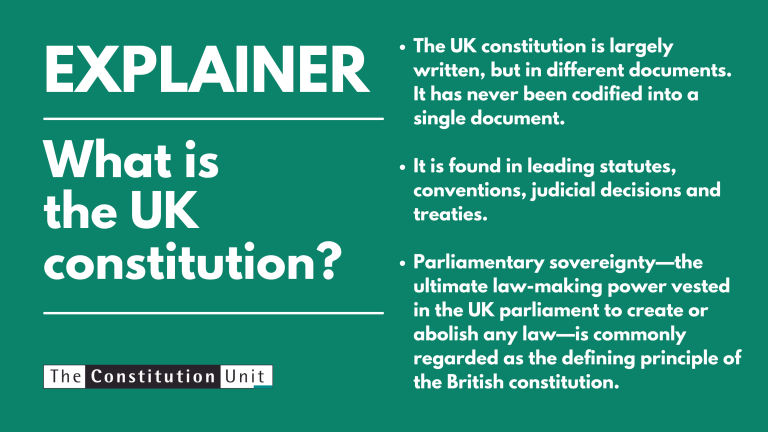
The UK is often said to have an ‘unwritten’ constitution. This is not strictly correct. It is largely written, but in different documents. But it has never been codified, brought together in a single document. In this respect, the UK is different from most other countries, which have codified constitutions. But not all: New Zealand and Israel also lack a codified constitution.
Codified constitutions are typically produced following a major historic turning point, such as the grant of independence, revolution, defeat in war, or complete collapse of the previous system of government. None of these things have happened to the UK, which is why it has never had cause to codify its constitution. (Our one revolution, in the 17th century, did briefly produce a written constitution: Cromwell’s Instrument of Government).
This is the reason why the UK has not felt the need to codify its constitution. But the UK does have a constitution, to be found in leading statutes, conventions, judicial decisions, and treaties. Examples of constitutional statutes include the Bill of Rights 1689, Acts of Union 1707 and 1800, Act of Settlement 1701, Parliament Acts 1911 and 1949, Human Rights Act 1998, Scotland Act, Northern Ireland Act and Government of Wales Act 1998. Examples of conventions include that the monarch acts on ministerial advice; that the Prime Minister sits in the House of Commons; that the Queen appoints as Prime Minister the person most likely to command the confidence of the House of Commons. These and other conventions have themselves been codified in documents such as the Cabinet Manual.
Parliamentary sovereignty is commonly regarded as the defining principle of the British Constitution. This is the ultimate law-making power vested in the UK parliament to create or abolish any law. But parliament can limit its law making power, as in the Human Rights Act; or devolve legislative power, as in the Scotland Act. Other core principles of the British Constitution include the rule of law, the separation of government into executive, legislative, and judicial branches, the accountability of ministers to parliament, and the independence of the judiciary.
The main disadvantage of an uncodified constitution is that it is harder to understand. Another is that it is easier to amend than in countries with written constitutions with elaborate amendment procedures. But this flexibility can also be seen as an advantage: it has enabled the removal of hereditary peers from the House of Lords, introduction of the Human Rights Act, devolution to Scotland, Wales, and Northern Ireland, and creation of the Supreme Court.
The UK constitution has multiple guardians. These include the Supreme Court, in its constitutional judgements (such as Miller/Cherry in 2019); the House of Lords Constitution Committee, and the Commons Public Administration and Constitutional Affairs Committee; the Lord Chancellor; and specific constitutional watchdogs, such as the Judicial Appointments Commission, or the Electoral Commission.
Since the vote to leave the EU, some have suggested that the UK faces a ‘constitutional moment’ which might lead to a codified constitution. But the difficulties of agreeing a written constitution should not be underestimated, and the democratic benefits of a written constitution should not be exaggerated.
 Close
Close



